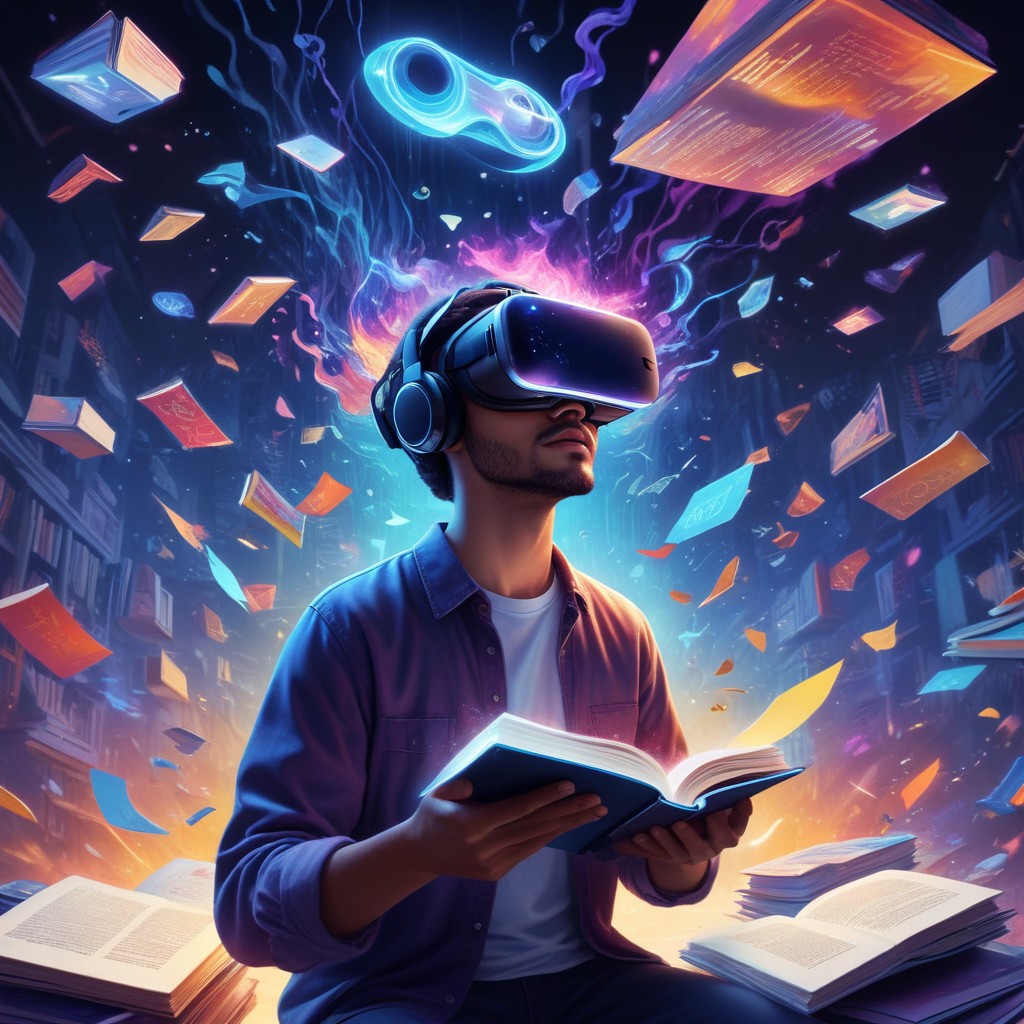Augmented Reality (AR) is revolutionizing the e-book industry, offering new and innovative ways to enhance the reading experience. Here are some ways AR is impacting e-books:
- Interactive Reading: AR enables readers to interact with the content in a more immersive way. For example, AR can bring illustrations, diagrams, and other visual elements to life, making the reading experience more engaging and interactive.
- Immersive Storytelling: AR can be used to create immersive storytelling experiences, where readers can interact with characters, environments, and objects in a more immersive way. This can be achieved through AR-enabled illustrations, 3D models, or even virtual reality (VR) experiences.
- Enhanced Visualization: AR can enhance the visualization of complex topics, such as science, technology, engineering, and mathematics (STEM) subjects, by providing interactive 3D models and simulations.
- Personalized Reading: AR can be used to create personalized reading experiences, such as customized book covers, illustrations, or even interactive quizzes and games.
- New Business Models: AR can enable new business models for e-books, such as subscription-based services that offer access to a library of AR-enhanced content.
- Increased Accessibility: AR can increase accessibility for readers with disabilities by providing alternative ways to engage with the content, such as audio descriptions or Braille translations.
- Enhanced Engagement: AR can enhance reader engagement by providing additional information, such as author notes, historical context, or behind-the-scenes content.
- New Revenue Streams: AR can create new revenue streams for authors and publishers by offering premium content or exclusive experiences for readers.
- Improved Discovery: AR can improve book discovery by providing interactive experiences that allow readers to sample content before purchasing.
- Future-Proofing: AR can help future-proof e-books by providing a platform for innovation and experimentation, allowing publishers and authors to stay ahead of the curve.
Some examples of AR-enhanced e-books include:
- National Geographic’s “The World”: An interactive e-book that uses AR to bring maps and illustrations to life.
- Simon & Schuster’s “The 7 1/2 Deaths of Evelyn Hardcastle”: A murder mystery e-book that uses AR to reveal clues and puzzles.
- Penguin Random House’s “The Picture of Dorian Gray”: An e-book that uses AR to bring Oscar Wilde’s classic novel to life.
As AR technology continues to evolve, we can expect to see even more innovative applications in the e-book industry.

